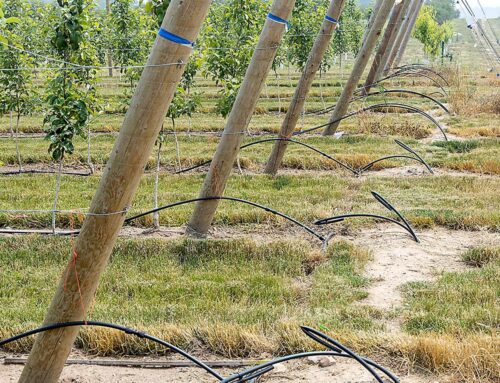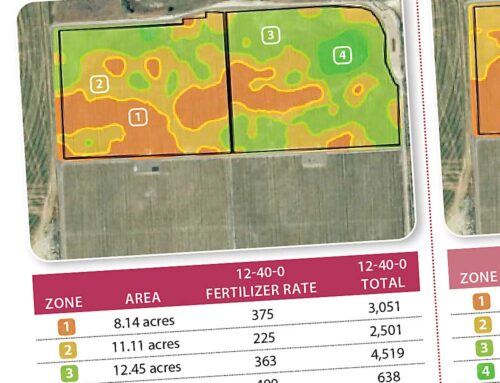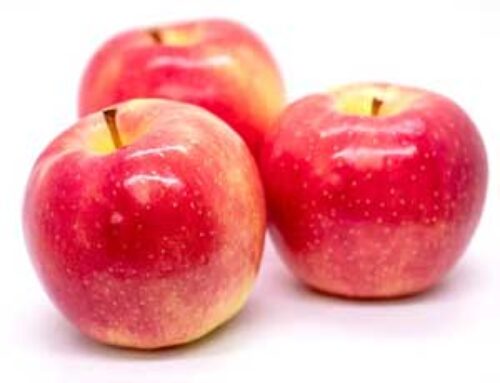family background / Kyle is a fifth-generation farmer in the West-central Michigan region. He was part of USApple’s Young Apple Leaders program, obtained a business degree from Grand Rapids Community College and is the son of Sue and Chuck Rasch.
age/23
grower/Conklin, Michigan
crops/Apples, peaches
business/Windy Ridge Orchards
How did you get your start in ag?
Like many family-owned farms, you’re always surrounded by the business and I grew up doing the small things, working my way up.
Now, I’m working with the crews and learning the hands-on skilled labor tasks. It’s not just sitting on the tractor anymore; I’m trying to pick up what I can about the horticulture aspects of the farm, too.
What kind of horticultural work have you been doing?
We’re in the process of updating our farm, and that includes more up-to-date planting styles. About 60 percent of our apple orchard is now high-density.
We’re expanding using the tall spindle system on a standard 11- by 3-foot spacing. As we modernize, we’re also taking out older, less desirable varieties. As we plant, we’re trying to increase our leaders per acre.
However, we are trying to find a balance between increasing our leaders and the increase of hours of labor that come with it. It’s just another reason why we’re looking at mechanization.
What are you doing with your peaches?
With our freestone peaches, we’re trying some newer growing techniques, such as an upright fruiting offshoots (UFO) system. We’re trying to find a way that doesn’t take as much hand labor.
It’s a challenge to find labor resources to both prune and thin the peaches. Learning how to grow multileader peaches has been tough. I’ve looked around our area and I haven’t found others attempting it.
In the future, I could see this system allowing for mechanized equipment, such as platforms. We’ve run some hedging trials on the system and we’ve found it creates too much shading, forcing us to continue hand pruning.
Why are you looking at planar systems?
I’m interested in learning about new tree management systems such as Stuart Tustin’s multileader systems.
It would be good to get to a point where we can shoot for a higher number of leaders per acre, while increasing yield for our apples. Personally, I like the idea of hedging rows.
Whether it will work as well as hand management is still up for debate. Considering that it’s getting tougher every season to find labor, we need to find a way to reduce the pressure to find workers.
What other challenges do you have growing in Michigan?
Most of the issues that we’re working on at our farm focus on modernizing to allow for mechanization and producing more uniform fruit.
In the past few years, we’ve gotten better at getting the crop to look similar from year to year.
It’s important to meet consumers’ expectations of what the fruit is going to look like every season. It’s one of the biggest challenges of growing fruit in Michigan.
Why are you a farmer?
I remember when I was in high school, I wasn’t so sure I wanted to go into agriculture. As I got older, it seemed like I was constantly doing stuff on the farm and I came to love the work.
It’s something I look forward to every morning. It’s what gets me out of bed every day. Now that I’ve been going to industry meetings, creating a support network and getting to know others, it has really lit a fire in me.
I’m really excited to see what the future holds within the industry and at our family business.
What would you tell another young grower?
If you’re looking at going into agriculture, you should try to find something that you enjoy.
There are more things to do than just grow fruit. Keep an open mind about what you think is the best direction or what techniques you want to use on the farm, and you’ll find success.
From working on the retail side of the business to producing cider, there’s a spot for just about anyone to find a career.
–TJ Mullinax







[…] Kyle Rasch, a young grower from Conklin, Michigan […]
[…] Kyle Rasch, a young grower from Conklin, Michigan […]